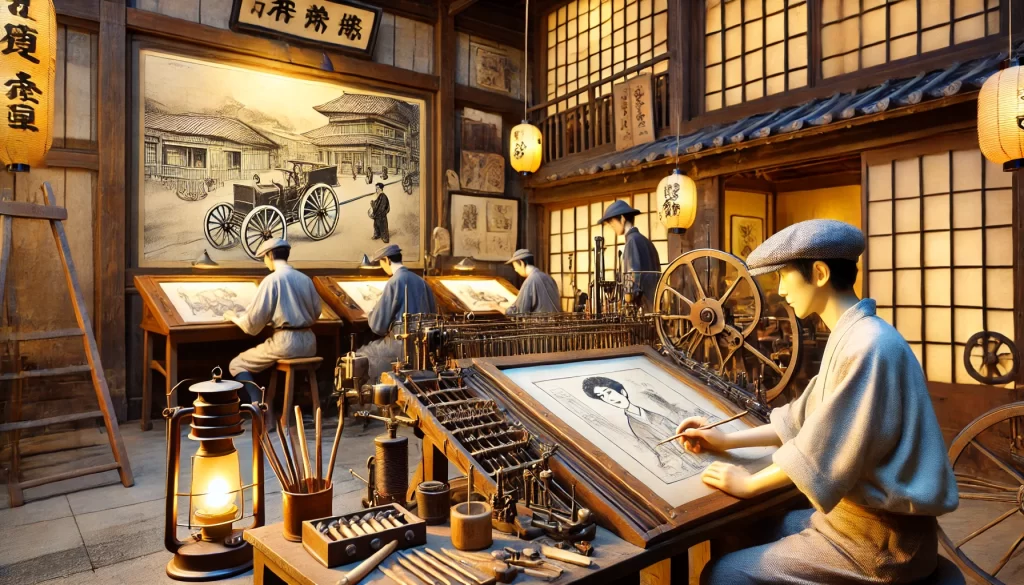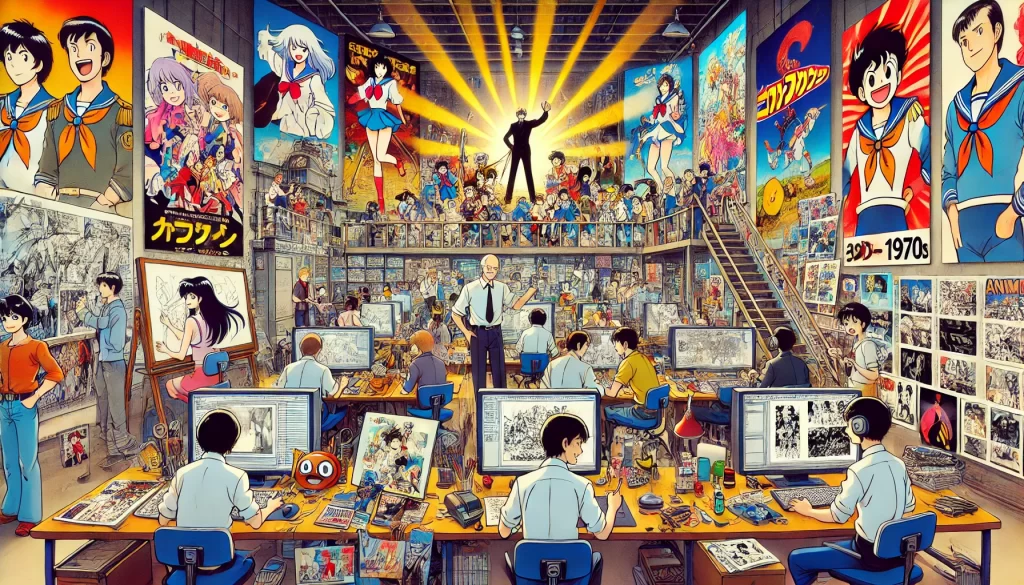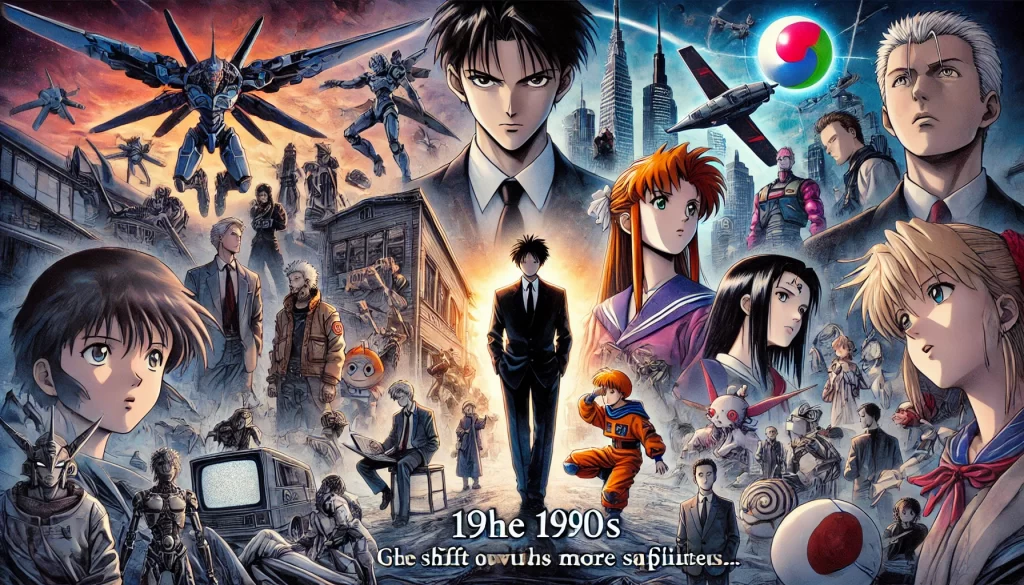Anime, as we know it today, is a rich and diverse form of entertainment that has captivated audiences worldwide. However, its roots stretch back to the early 20th century, evolving through numerous cultural and technological shifts. This article delves into the history of Japanese anime before 1999, highlighting key milestones, influential series, and the pioneering artists who laid the groundwork for modern anime.
The Early Beginnings

The Birth of Japanese Animation (1917-1945)
Overview: The origins of Japanese animation can be traced back to the early 20th century, with the first known animated films appearing in the 1910s.
Key Points:
- First Animated Films: The first recorded Japanese animated film, “Namakura Gatana” (The Dull Sword) by Jun’ichi Kōuchi, was released in 1917.
- Silent Era: Early anime films were silent and short, often influenced by Western animation techniques.
- Wartime Propaganda: During World War II, animation was used for propaganda purposes, with notable works such as “Momotaro: Umi no Shinpei” (1945).
Post-War Reconstruction and Innovation (1945-1960)
Overview: The post-war period saw significant growth and innovation in the Japanese animation industry, setting the stage for its future development.
Key Points:
- Toei Animation: Founded in 1956, Toei Animation played a crucial role in developing the industry, producing Japan’s first color animated feature film, “Hakujaden” (1958).
- Introduction of TV Animation: The late 1950s and early 1960s marked the beginning of television animation, with the creation of weekly animated series.
The Golden Age of Anime
The 1960s: Tezuka and the Rise of TV Anime
Overview: The 1960s are often considered the golden age of anime, largely due to the contributions of Osamu Tezuka, known as the “God of Manga.”
Key Points:
- Astro Boy (1963): Created by Tezuka, “Astro Boy” (Tetsuwan Atom) was Japan’s first domestically produced television anime series, setting a standard for future productions.
- Tezuka’s Impact: Tezuka’s work popularized the use of limited animation techniques, making anime production more cost-effective and viable for TV.
The 1970s: Genre Expansion and New Studios
Overview: The 1970s saw the expansion of anime into various genres and the emergence of new studios, further solidifying anime’s place in Japanese culture.
Key Points:

- Mecha and Super Robots: The mecha genre gained popularity with series like “Mazinger Z” (1972) by Go Nagai, introducing giant robots to anime.
- Shōjo Anime: The 1970s also saw the rise of shōjo anime, targeting young female audiences with series like “Candy Candy” (1976).
- Studio Ghibli’s Founders: Isao Takahata and Hayao Miyazaki, who would later co-found Studio Ghibli, began their careers at Toei Animation and created influential works like “Heidi, Girl of the Alps” (1974).
The Boom of the 1980s
Technological Advancements and Artistic Innovation
Overview: The 1980s were marked by technological advancements and artistic innovation, leading to higher production values and more diverse storytelling.
Key Points:
- OVA Boom: The introduction of Original Video Animations (OVAs) allowed for more experimental and mature content, such as “Megazone 23” (1985) and “Bubblegum Crisis” (1987).
- Sci-Fi and Fantasy: Series like “Mobile Suit Gundam” (1979) and “Dragon Ball” (1986) became cultural phenomena, influencing generations of fans.
Iconic Series and Films
Overview: The 1980s produced numerous iconic series and films that have left a lasting legacy on the anime industry.
Key Points:
- Akira (1988): Directed by Katsuhiro Otomo, “Akira” is a landmark film in anime history, known for its stunning animation and complex narrative.
- Nausicaä of the Valley of the Wind (1984): Directed by Hayao Miyazaki, this film’s success led to the founding of Studio Ghibli, which would become one of the most influential anime studios.
The 1990s: Global Expansion and Genre Diversification
Anime Goes Global
Overview: The 1990s saw anime’s popularity surge internationally, thanks to widespread distribution and the growing influence of Japanese pop culture.
Key Points:
- Sailor Moon (1992): This magical girl series gained international acclaim, introducing anime to a broader audience.
- Neon Genesis Evangelion (1995): Directed by Hideaki Anno, this series redefined the mecha genre and explored complex psychological themes.
Genre Diversification and Mature Themes
Overview: Anime in the 1990s continued to diversify, exploring more mature themes and complex storytelling.
Key Points:
- Cowboy Bebop (1998): A genre-blending series that combined sci-fi, western, and noir elements, “Cowboy Bebop” became a critical and commercial success.
- Ghost in the Shell (1995): Directed by Mamoru Oshii, this cyberpunk film delved into philosophical and existential questions, influencing numerous Western films and series.

Pioneering Artists and Studios
Osamu Tezuka: The God of Manga
Overview: Osamu Tezuka’s contributions to both manga and anime have had a profound impact on the industry.
Key Points:
- Astro Boy: Tezuka’s creation of “Astro Boy” revolutionized TV animation and set the foundation for future anime series.
- Innovative Techniques: Tezuka introduced cinematic techniques and narrative structures to manga and anime, elevating the art form.
Hayao Miyazaki and Isao Takahata: Studio Ghibli’s Visionaries
Overview: Miyazaki and Takahata co-founded Studio Ghibli, producing some of the most beloved and critically acclaimed animated films.
Key Points:
- Nausicaä of the Valley of the Wind: Miyazaki’s success with this film led to the establishment of Studio Ghibli.
- Grave of the Fireflies (1988): Directed by Takahata, this film is a poignant portrayal of the human cost of war, showcasing the emotional depth of anime.
The Cultural Impact of Pre-1999 Anime
Influence on Global Pop Culture
Overview: Anime’s influence on global pop culture has been profound, shaping the entertainment industry and inspiring countless creators.
Key Points:
- Western Adaptations: Many Western shows and films have drawn inspiration from anime, incorporating its visual style and storytelling techniques.
- Cosplay and Fandom: The rise of anime conventions and cosplay culture highlights anime’s significant impact on global fan communities.
Lasting Legacy
Overview: The foundations laid by pre-1999 anime continue to influence contemporary works, with many series and films considered timeless classics.
Key Points:
- Timeless Appeal: Series like “Dragon Ball,” “Sailor Moon,” and “Evangelion” remain popular, with reboots and new adaptations keeping the legacy alive.
- Cultural Preservation: Efforts to preserve and restore classic anime films and series ensure that new generations can appreciate these pioneering works.
Celebrating Anime’s Rich History
The history of Japanese anime before 1999 is a testament to the creativity, innovation, and resilience of its creators and studios. From the early days of hand-drawn animation to the global phenomena of the 1990s, anime has continuously evolved, pushing the boundaries of storytelling and artistic expression. By exploring the origins and milestones of anime, we gain a deeper appreciation for the rich cultural heritage that continues to captivate audiences worldwide. As we celebrate anime’s past, we also look forward to its future, inspired by the groundbreaking works that have paved the way for the next generation of creators.
Keywords:
- Beginnings
- Tezuka
- Golden
- Studios
- Technological
- Iconic
- Global
- Pioneering
- Cultural
- Legacy
Useful Links:
For the latest trends, Discover more!
Learn more about Anime from Post-2000
